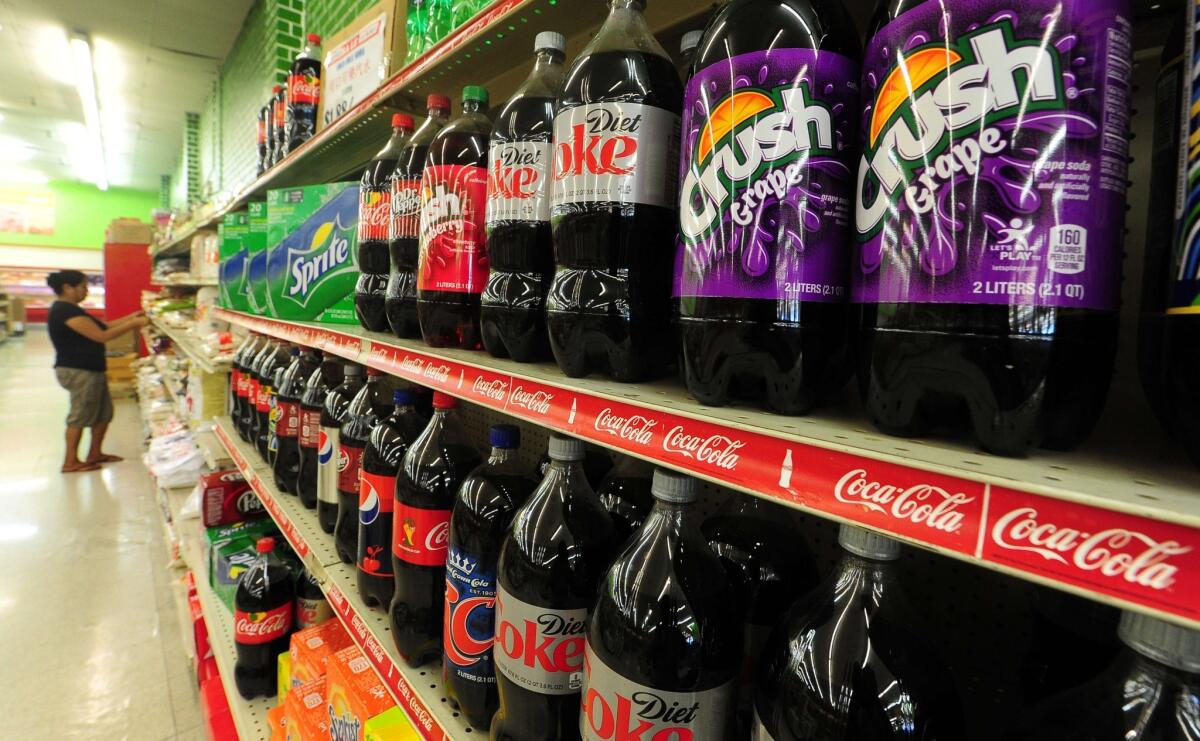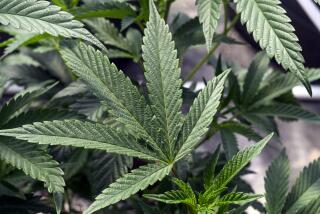Editorial: Sugar is a problem, but are proposed new labels a solution?

The FDA’s draft proposal to add information to the labeling of packaged foods focuses on a new category called “added sugar.” Above, a woman shops at a supermarket in Rosemead, Calif. in 2014.
The U.S. Food and Drug Administration is shifting its obesity focus from fat to sugar, as it should. Recent studies have provided evidence of how overconsumption of sugar, often through sodas and energy drinks, has contributed to the rise of weight-related health problems among Americans. But the FDA’s draft proposal to add labeling information on sugar has so many problematic inconsistencies that it could backfire.
The familiar nutrition labels on packaged foods would continue to tell consumers how many grams of sugar a serving contains. A new second line would break out how many of those grams were from “added sugar,” as well as what percentage that represents of all the added sugar a person should consume in a day. The idea is to direct shoppers away from empty sugar calories and toward foods that, although they naturally contain sugar, also provide other nutrients.
But sugar can be complicated stuff. Fruit juice concentrate would count as “added sugar” under the proposal rather than as “natural sugar,” even though its sugar occurs naturally. But the sugar in regular fruit juice would be considered natural — unless more sugar were added. And what about juice reconstituted from concentrate? How would that be labeled?
The FDA’s reasonable concern was that companies would switch to sweetening their products with fruit concentrates and thus load them with sugar calories while avoiding the “added sugar” label. But if the nutritional values of fruit juice and concentrate are the same, it’s misleading to label them differently.
Overall, the emphasis on added sugar could lead consumers to think that natural sugars aren’t something to watch carefully, which could encourage them to consume more, not less, sugar. Some fortified, flavored sports drinks contain a third of the sugar in fruit juice and just as much or more nutrition. But those drinks would all carry the “added sugar” stigma while the juice would not.
That might not matter, because consumers could see that the juice contained far more sugar, as well as more calories. But by setting a daily allowance on added sugar, and not all sugar, the FDA risks sending a message that naturally occurring sugar somehow doesn’t “count.” It does.
Before issuing its final rules, the FDA should reexamine the message it’s sending. Admittedly, this isn’t an easy problem to solve, but above all the agency should avoid giving consumers information that might lead to unintended consequences — such as higher overall sugar consumption. The words “natural” and “added” don’t necessarily mean “healthy” and “unhealthy.”
Follow the Opinion section on Twitter @latimesopinion and Facebook
More to Read
A cure for the common opinion
Get thought-provoking perspectives with our weekly newsletter.
You may occasionally receive promotional content from the Los Angeles Times.








